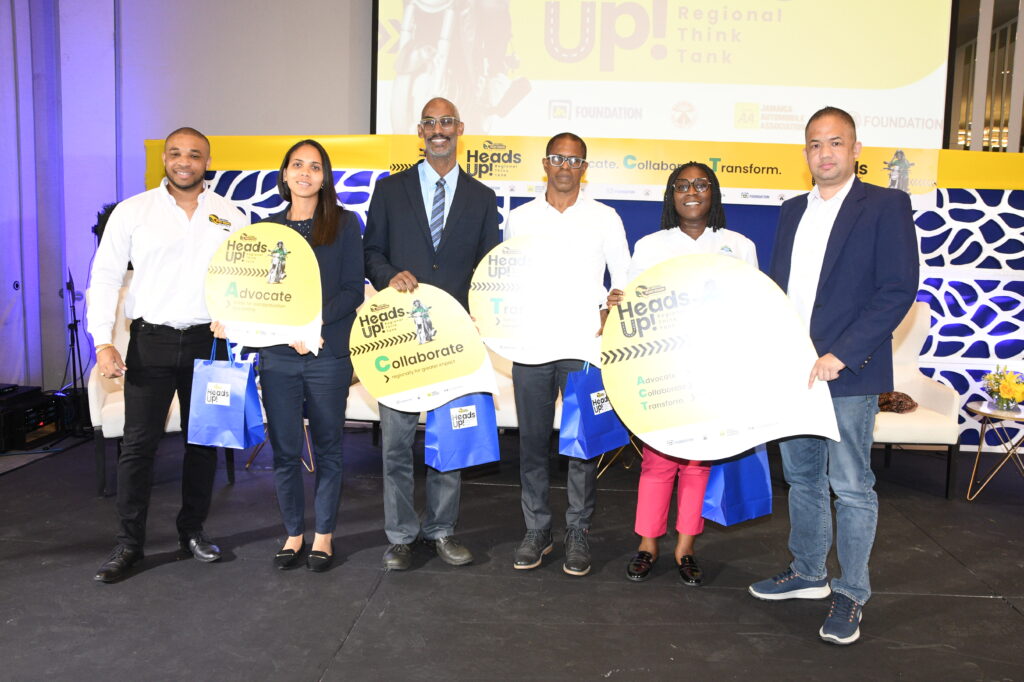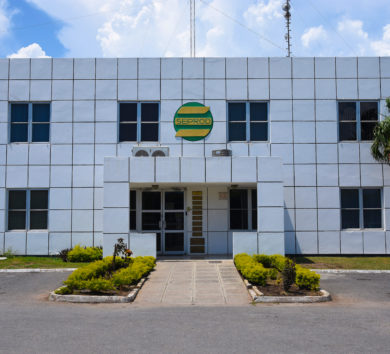

On any given day in Jamaica, especially in rural towns and bustling urban centres, motorcyclists thread effortlessly through traffic, dodging potholes, overtaking slow-moving vehicles, and gliding past gridlocked cars. It’s a familiar sight: motorcycle drivers balancing crates of goods, schoolchildren, and sometimes with two or even three pillion passengers squeezed onto the back.
Motorcycles aren’t just a convenience; they are a necessity. They offer speed, flexibility, and a lifeline in areas where buses are unreliable or absent from that route. Some ride to get to work on time, others to make deliveries, ferry passengers, or attend school. For young men, especially, motorcycles also represent a kind of independence, a source of income, and in some cases, status. While this trend benefits micromobility on the island, compliance with wearing certified helmets remains alarmingly low. Helmets, if present at all, are often strapped to handlebars, and when worn, are sometimes just perched loosely on the head rather than properly secured.
For Dr. Parris Lyew-Ayee, vice-president of the Private Sector Organisation of Jamaica and a member of the National Helmet Wearing Coalition (NHWC), this is not just a public health crisis, it is a systematic challenge for not only Jamaica, but also the wider region, which cannot be ignored any longer.
“We must stop treating entrepreneurship, education, and the environment as if they are separate agendas. These are not silos, these are the building blocks of sustainable development, and when one is weak, the whole system is at risk,” Dr. Lyew-Ayee said, while highlighting how the country could benefit from having an integrated system that supports micromobility.
The “three Es” framework: entrepreneurship, education, and environment, is central to his vision for a safer, smarter micromobility future. However, he was quick to caution that none of it works without a ‘safe systems’ approach. This model, adopted in countries like Sweden and New Zealand, recognises that human error is inevitable, and so roads, policies, and vehicles must be designed to reduce the consequences of those errors.

For many countries, micromobility isn’t just a convenience; it is a catalyst. It connects people to work, school, markets, and services. It fills the gaps where public transportation fails and supports informal economies built on movement, flexibility, and entrepreneurship. Dr. Lyew-Ayee believes that while other nations advance with structured micromobility systems, Jamaica is held back by outdated regulations, limited infrastructure, and what some may describe as a lack of vision for where the country is headed in this area.
Micromobility is not only a transportation issue, it is also an environmental one. In the context of growing concerns about climate change and sustainable development, micromobility presents a rare intersection of access and environmental responsibility. Electrically powered options, such as e-bikes, produce zero emissions and help reduce noise pollution, offering a cleaner, quieter alternative to traditional motorcycles.
As Dr. Lyew-Ayee notes, “E-bikes do present that zero emission and also the noise pollution element… so it solves several problems at the same time.” For countries like Jamaica, where environmental protection must be balanced with economic opportunity, micromobility offers a pathway to what he calls a “green economy”, one in which sustainability, income generation, and improved quality of life are not in conflict, but instead go hand in hand.
“In New York, not only does the city have a micromobility policy, but you do have those city bike-sharing type services. It has a risk framework around it… a logistics framework… and a commercial component. So, it’s a little bit more organised, which suggests some kind of order,” explains Dr. Lyew-Ayee, referring to Citi Bike, the city’s official bike-share system.
He further highlighted the difference in culture that may affect the implementation of this model in the local context.
“We don’t have anything close to that and yet, trying to transplant a foreign model into our context won’t work either. What Jamaica needs is something homegrown, something that reflects how Jamaicans move, live, and hustle. It’s all about finding that proper balance,” he says.
Explaining how the country can adapt a model that incorporates all, he further states: “That triple axis, safety, innovation, and the public good, must be the foundation of any policy we build. Jamaica may be small, but with the right framework, we can design a micromobility model that works for us, not just copy what works elsewhere.”
But with this freedom of movement comes a hefty price.
Motorcyclists now make up over 30 per cent of Jamaica’s road fatalities, and at St. Ann’s Bay Regional Hospital, one in four surgical patients is a motorcycle crash victim. Despite the booming use of motorcycles, especially in underserved rural areas, Jamaica’s response has been slow, fragmented, and in some cases, dangerously indifferent.
Motorcycles are cheap to import and easy to use, which makes them ideal for young men seeking employment in areas where few opportunities exist. But there are no official training or licensing systems for bike taxis, low subscription to driver certification programmes, and in many cases, no helmets, at least, not the kind that meet safety standards. Drivers learn from each other, often under informal mentorship, or trial by traffic.
“We’re not trying to shut down hustle,” Dr. Lyew-Ayee says. “We’re trying to make hustle safe.”
Public education campaigns, he argues, have also fallen short. Posters, ads, and public
lectures rarely reach the young motorcyclists and pillion passengers who most need the message. Worse, the cultural associations of masculinity, risk-taking, and resistance to authority often get in the way.
Then there’s the environment itself. Rural roads are frequently unpaved, poorly lit, or riddled with potholes, with no signage and no sidewalks. Emergency response times can stretch to over an hour. The infrastructure simply doesn’t match the reality of how Jamaicans move around.
“A road isn’t safe just because it’s paved,” says Dr. Lyew-Ayee. “It’s only safe if it protects everyone, especially the most vulnerable.”
Jamaica is far from being alone. Across the Caribbean and Latin America, micromobility is on the rise, but road safety is not keeping pace. To tackle this, the National Helmet Wearing Coalition (NHWC), a project being implemented by the JN Foundation in collaboration with the National Road Safety Council and funded by the FIA Foundation, recently hosted its Heads Up Regional Think Tank. The forum united road-safety advocates, policymakers, and law-enforcement leaders from across the region to confront the urgent challenge of motorcycle-helmet safety and its intersection with micromobility. Participants openly shared challenges, spotlighted proven strategies, and highlighted success stories that can be replicated in other territories to strengthen enforcement, improve compliance, and ultimately save lives.
In Belize, helmet laws exist, but enforcement is sporadic and often limited by capacity. In Guyana, standards for helmet quality remain inconsistent, and informal transportation systems dominate the landscape with little regulatory oversight. The Dominican Republic, which has one of the highest motorcycle death rates in the region, has launched national campaigns and crackdowns, but struggles with deep-rooted cultural resistance and poverty-related barriers to enforcement.
In Mexico, however, a shift is underway. Data-led interventions, like mandatory training, standardised helmet distribution programmes, and GPS-tracked moto-taxi pilots, have begun to reduce fatalities in high-risk regions. Collaboration between federal and local governments, health ministries, and civil society has been key.
Similar to the purpose of the Regional Think Tank, Dr. Parris Lyew-Ayee highlighted a national workshop held earlier this year that brought together key stakeholders from enforcement, medical, and policy sectors to confront Jamaica’s own helmet safety challenges. “We had our helmet workshop earlier this year. It brought together key stakeholders from enforcement, medical, and policy backgrounds. We looked at helmet usage trends, discussed gaps in enforcement and compliance, and worked on recommendations to strengthen the national response to helmet safety,” he explained.
What lessons can Jamaica take from these countries?
Dr Lyew-Ayee believes there are three critical priorities. First, he emphasises the need for standardised, regional testing and certification for helmets and other safety equipment.
“We can’t keep importing cheap, unsafe helmets just because they look good,” he warns. “There has to be a regional commitment to quality.”
Second, he calls for real-time data sharing between agencies. At present, crash data is scattered across ministries, police reports, and hospitals, making coordinated action and evidence-based policymaking difficult. Finally, he advocates for community-led enforcement and education, especially through trusted local institutions such as churches, schools, and community centres.
“Top-down enforcement alone won’t work,” he says. “We need buy-in from the bottom up.”
Dr Lyew-Ayee’s vision is not just about motorcycles. It’s about how a small island nation, and a wider region, can use micromobility as a tool for equity, access, and opportunity, rather than a source of preventable tragedy.
This vision aligns with Jamaica’s Vision 2030 development goals: building a safe, prosperous, and inclusive society. But if micromobility is to support that vision rather than undermine it, then serious investments are needed, investments in policy, public education, infrastructure, and partnerships.
“The question isn’t whether motorcycles are here to stay. They are,” he says. “The question is: will we let this evolve into a public safety disaster, or will we build a model that works, for Jamaica, and for the region?”
The hum of motorcycles won’t fade anytime soon. The challenge now is to make sure that hum isn’t followed by a siren.







Comments